Ductile Iron Pipe Specifications: 4 Key Material Components Explained
Ductile iron pipes contain remarkable specifications for adaptation to many piping systems, such as municipal water, wastewater, and industrial pipelines. Standards like AWWA C150/A21.51 and ISO 2531 indicate how ductile iron pipes perform via dimensions, pressure class ratings, and coatings under heavy loads and internal pressures.
This article guides the engineers and project managers to achieve a practical understanding of ductile iron pipe properties for a reliable selection lasting over a century!
Material Composition and Properties of Ductile Iron Pipes
Ductile iron pipes are manufactured for long-lasting performance due to their magnificent chemical compositions over traditional gray cast iron. Here are the primary initial materials for ductile iron pipes:
- Iron: To form the foundation of pipe, iron creates a structure to resist heavy loads in piping systems.
- Carbon: added at 3.2-3.6% to increase the strength of ductile iron pipes, for handling high pressures in water systems.
- Silicon: Added at 1.8-2.8% for a stronger performance in harsh underground water systems to remain with no corrosion over decades.
- Magnesium: Mainly added (0.02-0.06%) to shape that spheroidal graphite structure to handle cracks and stay flexible in seismic zones.
- Magnesium Tip: This spheroidal graphite structure of DI pipes, which stems from magnesium, surpassed old-fashioned gray flaky graphites that cracked easily.
Mechanical Properties
Ductile iron pipes perform incredibly under stress with their characteristics like flexible strength, elongation, and toughness. Here’s a table of these properties and their role in long-term performance in piping systems that comes from a balanced combination:
| Property | Value | Description |
|---|---|---|
| Tensile Strength | ≥ 420 MPa | Resists breaking under tension |
| Yield Strength | ≥ 270–300 MPa | Resists permanent deformation |
| Elongation | 10–20% | Ability to stretch without breaking |
| Hardness | ≤ 230–250 HB | Balances durability and workability |
International Standards for Ductile Iron Pipes
Ductile iron pipes are verified by international standards to meet the global required quality, safety, and performance in water, sewer, and industrial piping systems. Below are the most used standards for DI pipes for the design, manufacturing, and installation process:
AWWA/ANSI (U.S.)
American Water Works Association (AWWA) standards define the required properties in the U.S. pipeline systems. For instance, C150/A21.50 and C151/A21.51 work for thickness classes, design, and mechanical properties of DI pipes to handle both internal and external pressures.
EN/ISO (Europe and International)
European and ISO standards provide a global view of various pipeline applications. To give an example, EN 545 and EN 598 indicate how fittings and joints should be designed for reliable testing in wastewater and water systems. (Source: DIPRA)
Also, ISO 2531 and ISO 4179 set standards of cement mortar lining or zinc coating for gas or water pipelines.
IS (Indian Standards) and AS/NZS (Australian/New Zealand Standards)
After ISO, AWWA, and EN guidelines, IS, AS, and NZS standards are used more nationally for water, gas, and sewer piping infrastructure.
IS 8329 and IS 9523 cover the fitting and manufacturing process of DI pipes for pressure pipelines, while AS/NZS 2280 and WSAA PS200 create a base for fittings and procurement of DI pipes and further specs.
Dimensional Specifications
Standardized DI pipe dimensions make performance and durability possible. These specs include wall thickness, lengths, and tolerance verified by global guidelines.
Nominal Diameters
Ductile iron pipes are designed from DN 40 to DN 2000 mm to fit in small water pipelines to large-scale chemical transmission pipelines.
Wall Thickness
Standards indicate the wall thickness design for each application. For instance, AWWA C150/A21.50 determines the thickness classes (e.g., 0.25-0.81 inches for Class 150-350).
Length Effectiveness
Iplex highlights that the proper effective length for DI pipes counts as 5.7-6 m, which requires cutting and calibration, followed by guidelines for further installations.
Outside and Inside Diameters
Inside and outside diameters also follow standards like AWWA C151/A21.51, which request a 12.1-inch outside diameter for a DN 300 pipe to tolerate certain pressure.
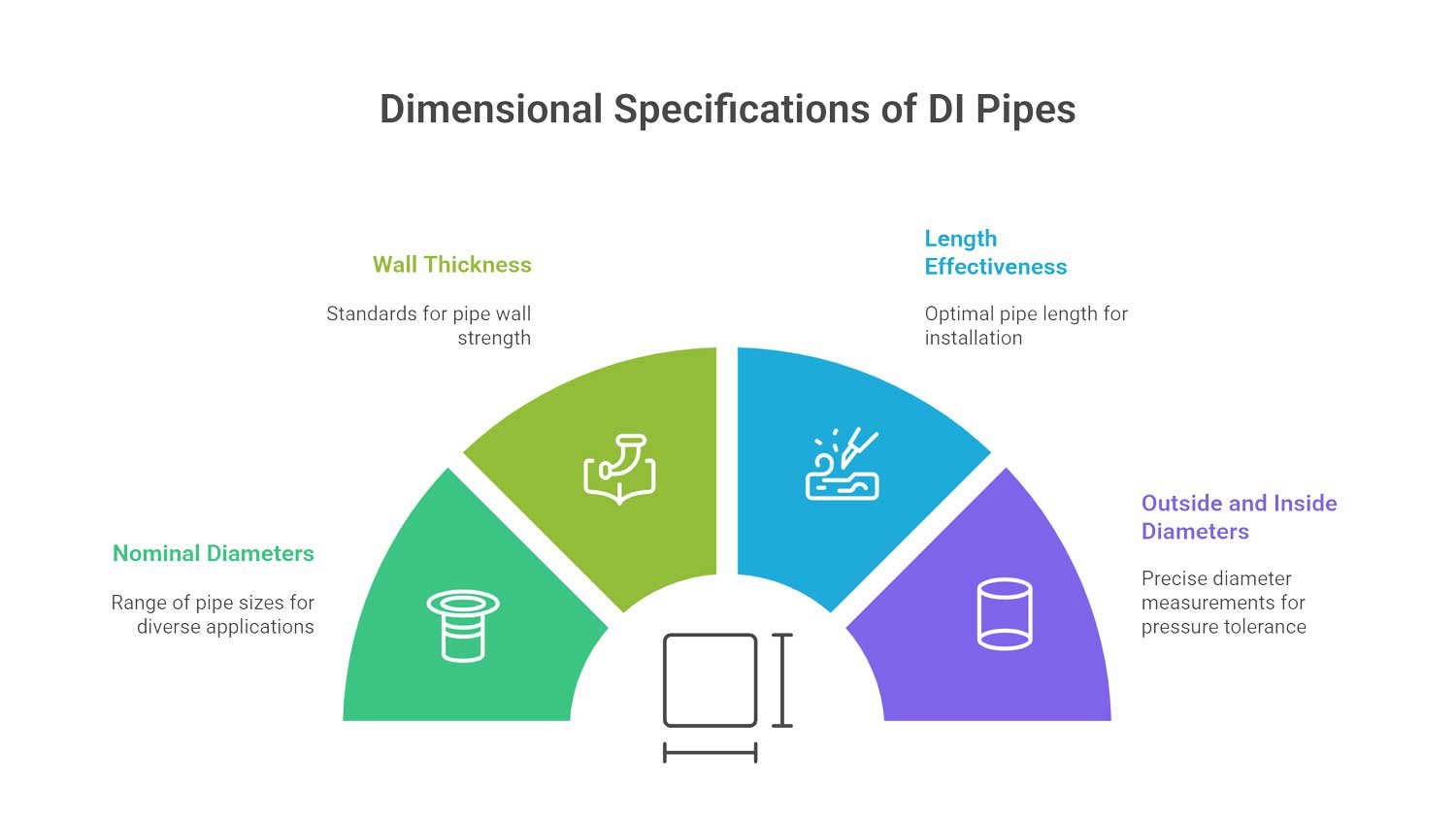
Pressure Classifications for Ductile Iron Pipe
Pressure class ratings examine the higher internal pressure tolerance of DI pipes for a safe and durable piping system.
- AWWA Pressure Classes: AWWA C150/A21.50 sets pressure classes from 150–350 psi for U.S. water systems to manage the project demands.
- EN/ISO C-Class: EN 545 and ISO 2531 use C-class ratings (C25, C30, C40) that resist up to 40 bar pressure.
- IS K-Class: To balance the cost and strength, IS 8329 covers K-class ratings (K7, K9, K10) for Indian water and sewage systems.
- AS/NZS PN Ratings: Shows how the pressure rating of DI pipes (PN20, PN35, up to 3,500 kPa) affects the design for various applications.
| Standard | Pressure Rating | Application |
|---|---|---|
| AWWA C150/A21.50 | 150–350 psi | U.S. water systems |
| EN/ISO (EN 545, ISO 2531) | C25, C30, C40 (25–40 bar) | European/international pipelines |
| IS 8329 | K7, K9, K10 | Indian water/sewage systems |
| AS/NZS 2280 | PN20, PN35 (up to 3,500 kPa) | Australian/New Zealand pipelines |
Joint Types and Specifications
For a secure and non-leaking connection in specific pipelines, there are multiple joint choices to balance the flexibility and easy installation.
- Push-on (Tyton) Joints: For a non-leak and flexible connection, this method uses EPDM gaskets.
- Mechanical Joints: Mostly used for high-pressure applications with couplings and collars in fittings or crossings.
- Flanged Joints: For above-ground installation, with bolt and gaskets make a sturdy connection.
- Restrained Joints: Used for a long-lasting connection in high-pressure or dynamic conditions where thrust threatens the installation.
Internal Lining and External Coating Specifications
Due to the iron nature of DI pipes, they require linings and coatings for resistance in harsh conditions. Below are the most-used internal linings and external coating materials:
1. Cement Mortar Lining
As noted in EN 545 and ISO 4179, cement mortar lining uses thickness classes (e.g., 3-6 mm for DN 80-300 mm).
2. Calcium Aluminate Cement
Calcium aluminate cement lining contains improved chemical durability and resistance in aggressive conditions like pH 4–12 (Source: ScienceDirect)
3. Bituminous Seal Coat
An optional sealing to increase lifespan in soft waters that requires leaching prevention.
4. Zinc Coating and Zinalium Coating
Zinc coating (200 g/m²) includes standard corrosion protection for buried pipes, while Zinalium (zinc-aluminum alloy, 400 g/m² + 100 µm epoxy) increases the corrosion resistance.
5. Epoxy Coatings
According to the AWWA C116-09, epoxy coating is used for fitting in DI pipe and gray cast iron pipe for reliable adhesion.
6. Polyethylene enhancement
Polyethylene enhancement is used for harsh soils and aggressive conditions in direct burials per AWWA C105/A21.5.
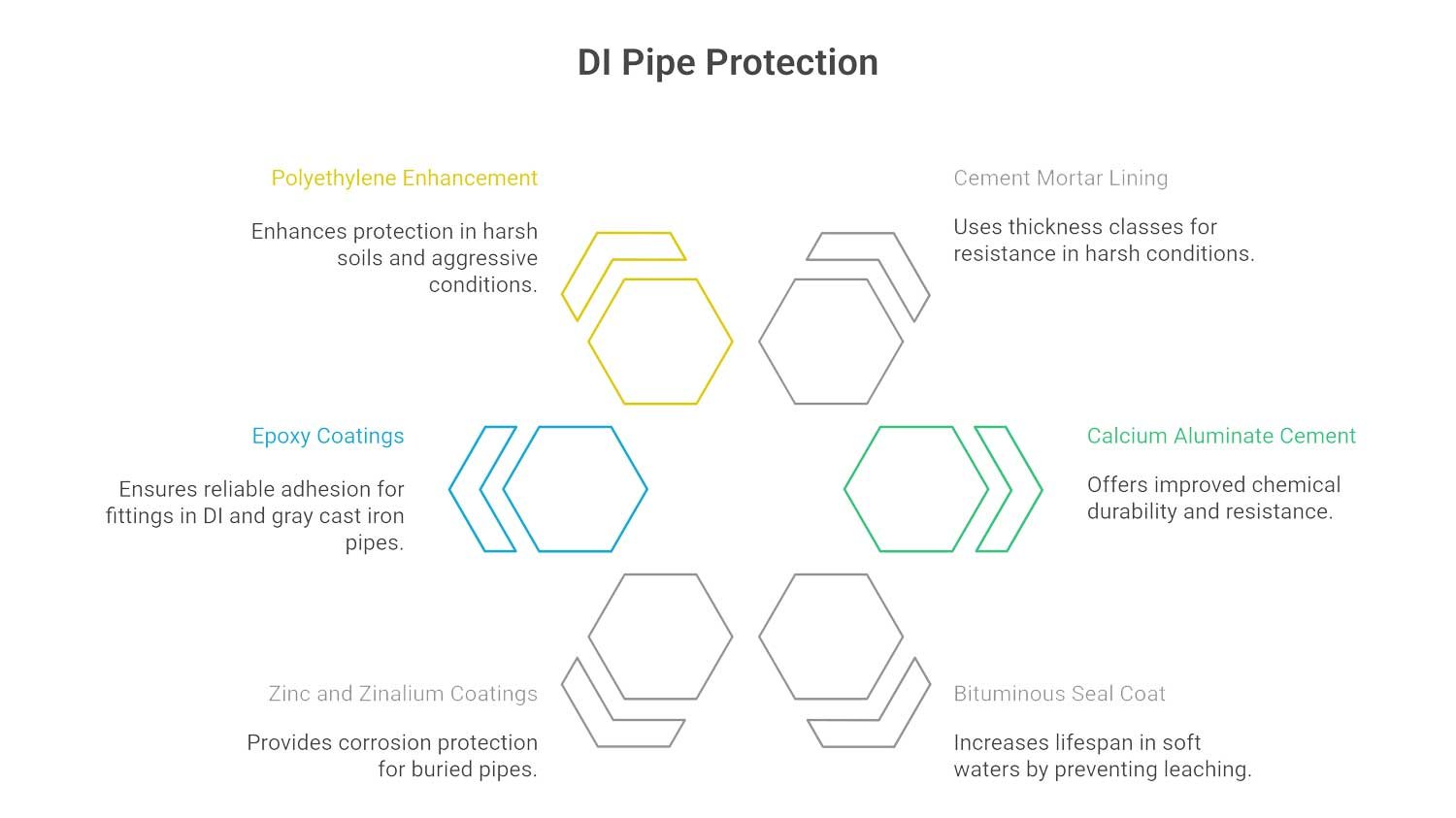
Corrosion Protection for Ductile Iron Pipe
Corrosion protection of DI pipes comes from several components, such as its structural design, coatings, and evaluations like the DIPRA method in harsh environments.
Natural resistance: Due to the spheroidal graphite structure of DI pipes compared to old gray cast iron pipes, they resist corrosion better in corrosive conditions.
Zilalium Coating: Zinalium coating (400 g/m² zinc-aluminium + epoxy) allows engineers to bury directly without sleeving to boost the lifespan.
DIPRA Method: In the DIPRA method, the corrosivity of soil is evaluated to indicate the type of coatings, such as polyethylene enhancement in aggressive soils.
Handling, Storage, and Installation Specifications
In addition to the mechanical and structural specifications, how to store, handle, and install DI pipes can determine their further performance in water and wastewater systems. Consider the tips below for a reliable piping system:
- Use protected lifting with textile straps to prevent coating damage during transport.
- To avoid coating damage and deformation, store pipes on level ground and stacked.
- Follow specific standards like AS/NZS 2566.2 for bedding materials and trench sizes.
- For a proper fitting, use calibration tools in cutting and field assembly for DN 300 or more.
Design Considerations
To achieve a safe and durable pipeline, the design of ductile iron pipes should be balanced by internal and external forces.
1. Internal Pressure Design
With a safety factor of 2.0 and a 100-psi surge allowance, the internal pressure design makes use of the Barlow formula (P = 2St/D), where P stands for pressure, S for stress, t for thickness, and D for diameter.
2. External Load Design
Takes into account trench conditions, truck loads, and earth loads (Types 1–5 per AWWA C150). Additionally, the choice of wall thickness varies by standard and balances internal and external loads.
3. Design Philosophy
Last but not least, design philosophy differences (AWWA vs. EN, for example) reflect local preferences that are influenced by environmental factors.
Conclusion
After all, we’ve got the last station, where ductile iron pipe specifications are not just words, but they mean to appear as crucial factors in pipeline design for a durable and non-leaking performance. From compositions to joint types, and from dimensional specs to global standards like AWWA C150/A21.50 and ISO 2531 that reflect the resistance, strength, and long lifespan of ductile iron pipes across various applications.
FAQs
1- What makes ductile iron pipes different from gray cast iron pipes?
Due to the spheroidal graphite structure of DI pipes compared to old gray cast iron pipes, they resist corrosion better in corrosive conditions.
2- Why are international standards important for ductile iron pipes?
Ductile iron pipes are verified by international standards to meet the global required quality, safety, and performance in water, sewer, and industrial piping systems.
3- How are ductile iron pipes installed properly?
For a proper fitting, use calibration tools in cutting and field assembly for DN 300 or more.
4- What design factors are considered for ductile iron pipes?
To achieve a safe and durable pipeline, the design of ductile iron pipes should be balanced by internal and external forces.

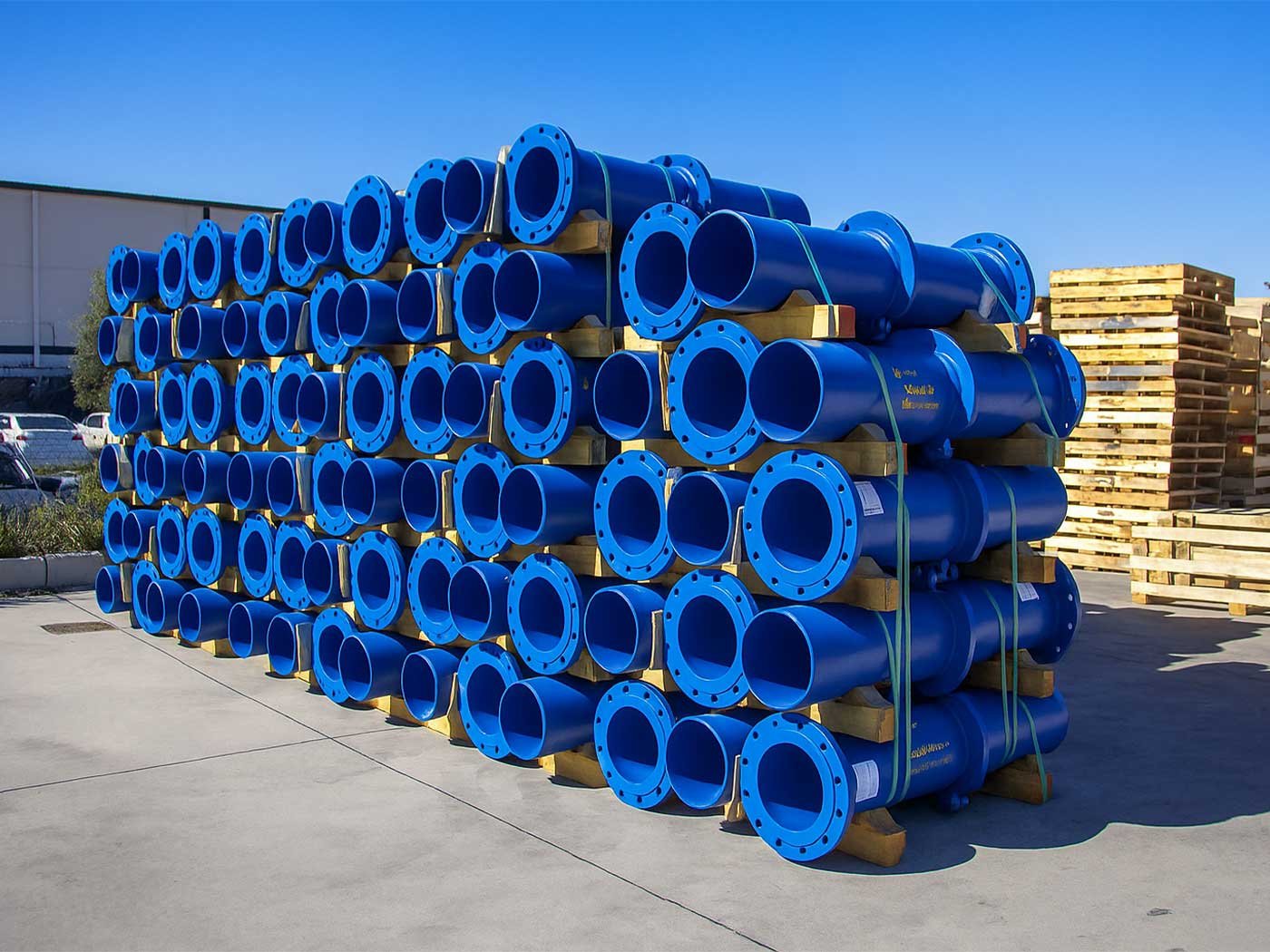


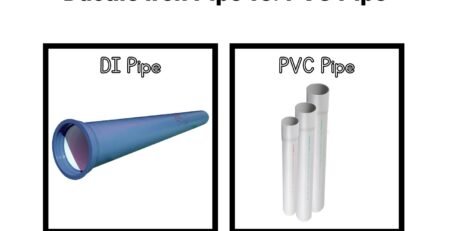
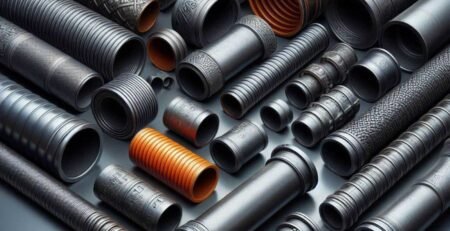
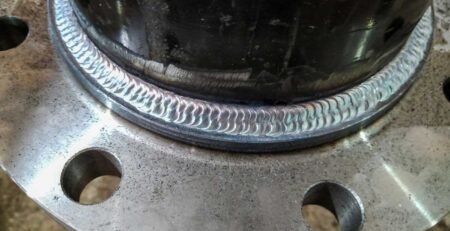
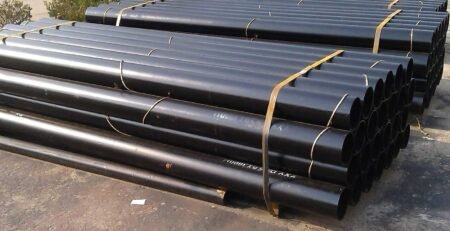
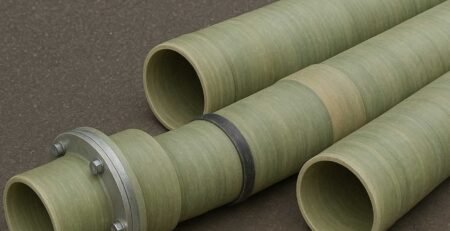
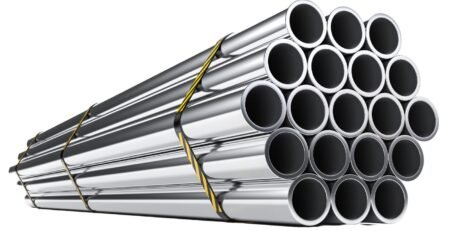
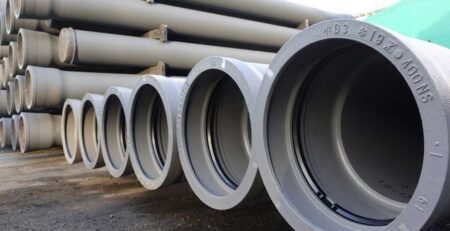
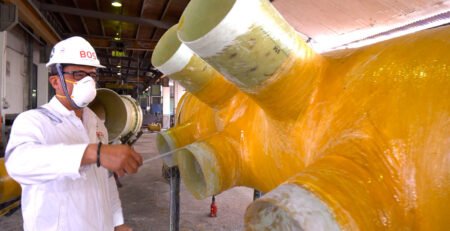
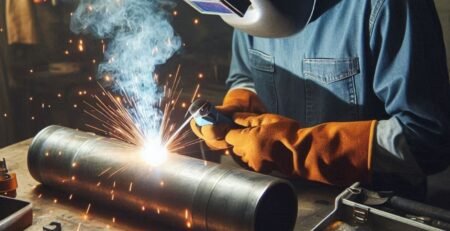
Leave a Reply